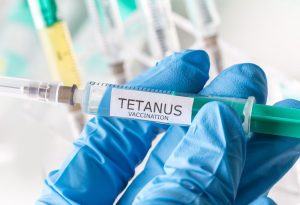In this Article
If you are a parent, the mere thought of getting your baby vaccinated and hearing his cries might make you look for harmless alternatives. And there are! You can consider painless vaccination for your baby. Painless vaccinations are acellular vaccines that contain fewer antigens and are administered by a syringe. As these vaccinations don’t make a child uncomfortable, they have become a popular choice among parents. But before you take your child on a painless route, you must understand what these vaccines are all about and whether or not they are effective.
What Is Painless Vaccination?
Painless vaccination for babies is a recent invention in the field of immunology. A painless vaccine is given as a combination vaccine which goes by the name DaPT (Diphtheria, acellular Pertussis and Tetanus.) This vaccine causes less or no pain and swelling where it is injected. And the DaPT vaccine along with being painless is as effective as the regular painful vaccines such as the DPT vaccine.
Are Painless Vaccines Really Effective?
Painless or painful – both the types of vaccines are equally effective as shown by recent studies. A painless vaccine too can prevent DPT and its severe forms. It is recommended! However, one should remember that no vaccine is 100 per cent effective. Although the vaccinated child may become immune, the disease can still be passed along through him to other children who have not been vaccinated or who have weak immunity. Similarly, if the child has low immunity, he may get an infection.
Are Painless Vaccines Safe?
Painless vaccines are safe – they prevent babies from experiencing post-vaccination side effects like fever and painful swelling.
Advantages of Painless Vaccination
Here are some advantages that have been linked to painless vaccinations:
- Pain experienced by a child is minimal.
- There is little to no swelling at the injection site.
- Unlike other vaccines, there is very less chance of fever after the shot.
Side Effects of Painless Vaccine in Babies
Generally, there are no side effects of painless vaccines in babies. Painless vaccinations are not actually pain-free. They cause the same amount of pain when administered, but post-vaccination there is lesser pain and the chances of fever are also less. The only downside of this vaccination is that it is expensive. In fact, the price of the painless vaccines is double the cost of painful vaccines.
Painless vs. Painful Vaccine
- DPT (Diphtheria, Pertussis and Tetanus) is a painful form of the painless vaccination. It is also known as Easy-five or Pentavac.
- DaPT (Diphtheria, acellular Pertussis and Tetanus) is the painless version of the vaccination and is also known as Pentaxim.

- Pentadic (painful) protects against Diphtheria, Pertussis, Tetanus, Haemophilus Influenzae Type B and Hepatitis B, while Pentaxim (painless) protects against the same diseases except for Hepatitis B.
- The painful vaccination causes swelling in the injected area and is often accompanied by fever whereas the painless vaccination does not have such severe after-effects.
Painless or Painful Vaccine – Which Is Better?
Painless as well as painful vaccines are equally effective. So you can choose either for your baby. But do keep in mind that the painless vaccines are expensive.
Immunization Schedule Based On the Choice of Vaccines
According to the Indian Academy of Paediatrics, one should give the painful vaccine as follows:
Primary Immunization: This should be given to babies at the ages of six weeks, ten weeks, and fourteen weeks.
Booster Shots: Booster shots should be given to a child when he turns one and a half years of age and at five years of age.
According to the Indian Academy of Paediatrics, one should give the painless vaccine as follows:
Primary Immunization: The IAP recommends that the painless vaccine be given only in special circumstances for the primary vaccinations. Some of the special circumstances include allergic reactions to the previous dose of the painful vaccine or when the child suffers from neurological problems.
Booster Shots: These can be given at the ages of one and a half years and five years.
Note: As per the new guidelines of IAP, the schedule for the painless vaccine and painful vaccine is the same.
As a parent, you might want to spare your child from the after-effects of the painful vaccination, but its benefits over the painless vaccine are much greater. It is all right to give your child the painless vaccine for the booster shots, but for their immunity, painful vaccines should be given.









